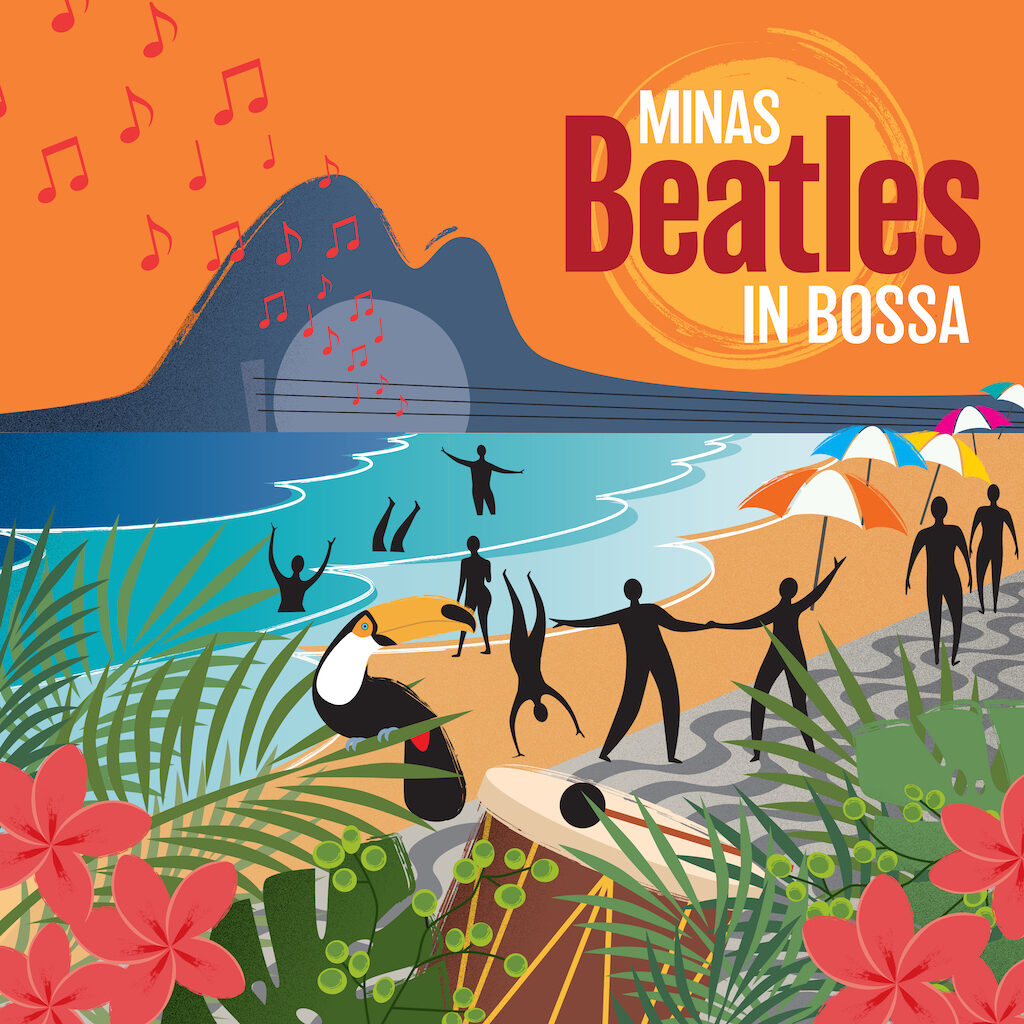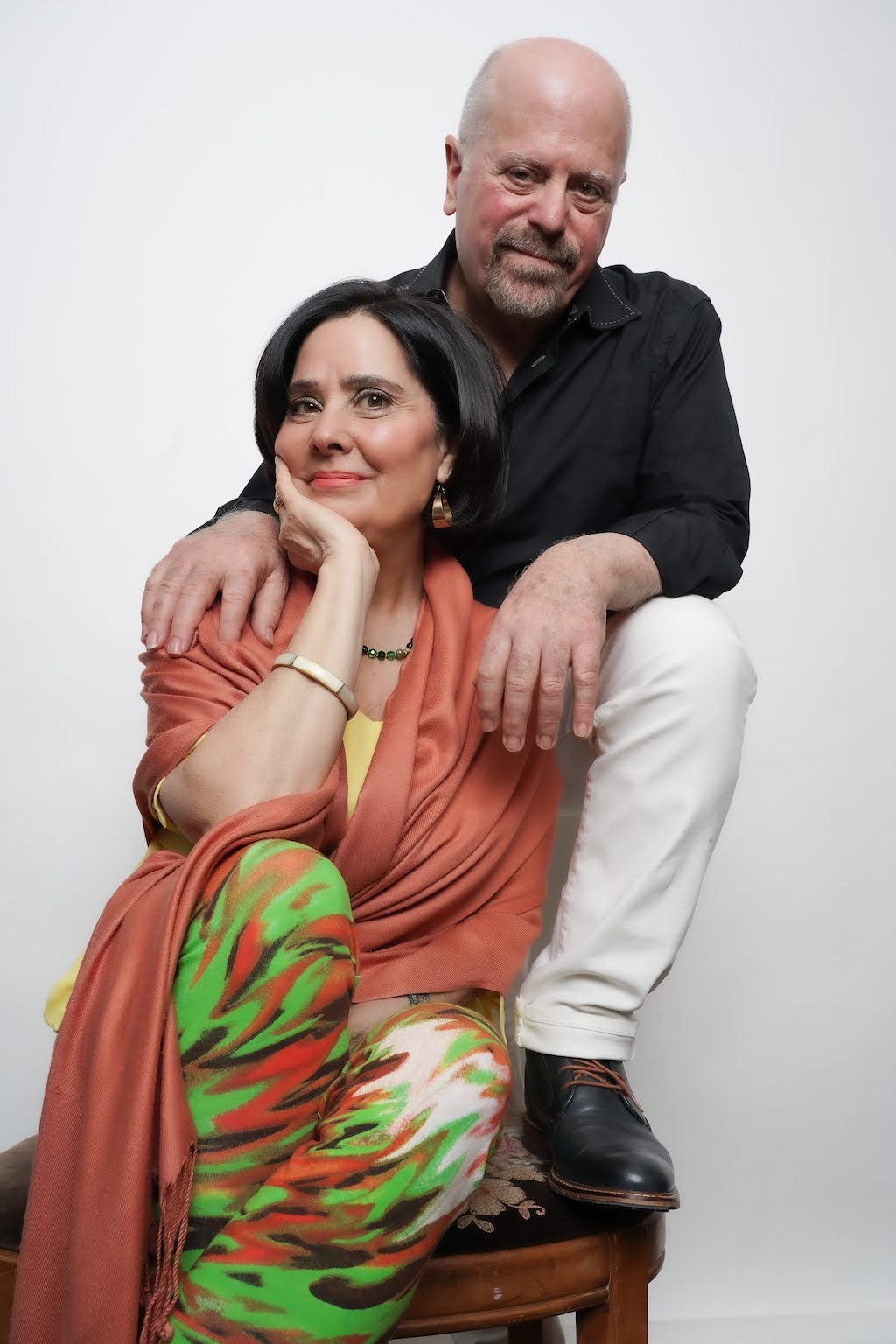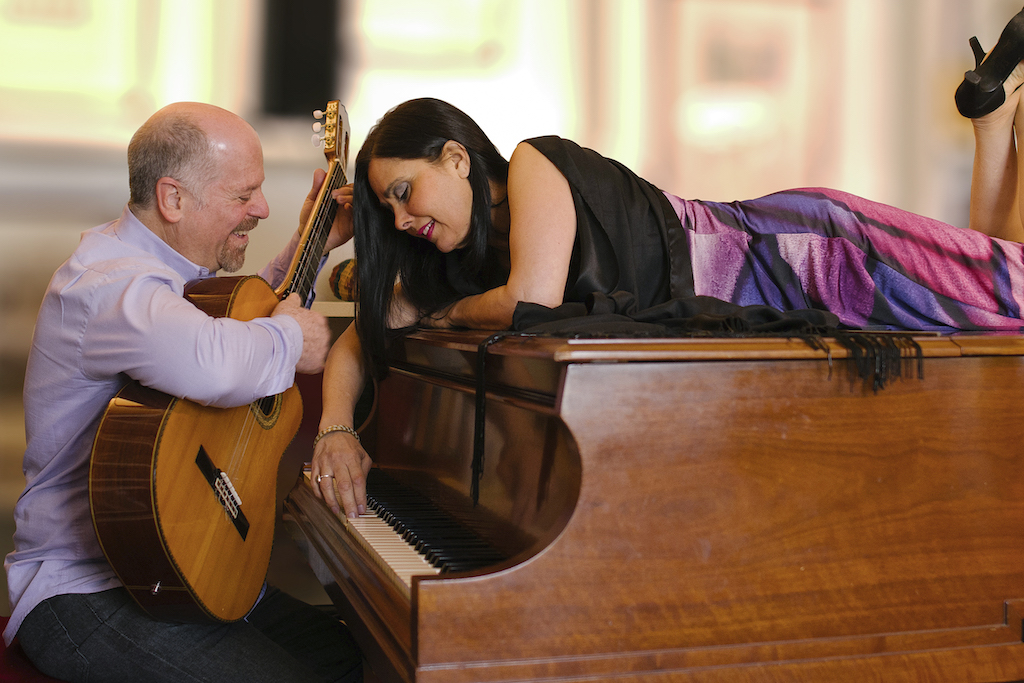
Brazil-to-Philly transplant Orlando Haddad talks about new music, Sergio Mendes and his Philadelphia-based bossa nova jazz band, Minas.
When young guitarist, vocalist, songwriter and arranger Orlando Haddad left his home in Minas Gerais, Brazil and his school in Rio de Janeiro in 1974, he probably didn’t realize he’d get to Philadelphia eventually. First for a Masters of Science in Arts Administration degree from Drexel University in 1986. Secondly in 2002, this time at Temple for a Masters in Composition degree. Then again, Haddad had not anticipated meeting fellow musician, composer and singer Patricia King, who grew up in Carlisle, PA, in the US school where they met in North Carolina. Together, the two front the Brazilian ensemble Minas.
Several years after their most expansive storytelling journey, the theatrical projects of La Giara (The Water Jug), Minas, which now includes their son, Jordan, returns to love and romance with its new album, “Beatles in Bossa”, a record they’ll debut May 26 at World Cafe Live.
“At the time of La Giara, we were exploring individual projects: Patricia had just returned from her grandparent’s land, Sicily, inspired to write her family story which evolved into a book and a two-act musical, significantly influenced by Brazilian rhythms and harmonies,” says Haddad. “Orlando had returned to working on various 20th century compositions based on Brazilian rhythms combined with classical writing. When Minas had a date scheduled at The World Cafe, Orlando suggested to do something fun and came up with the Beatles in Bossa idea. When we began playing with the Beatles material, it was effortless and joyful to transform Beatles songs into our Brazilian musical language.”

What’s most interesting concerning The Beatles and bossa nova, in the first place, is that the early 60s, say 1960 to 1967, the fascination with all things Brazilian was at its heights within popular culture. Currently celebrating its 60th anniversary is Jazz Samba, the 1962 classic from saxophonist Stan Getz and guitarist Charlie Byrd. To commemorate and expand upon the legend of Getz-Byrd’s culture-changing seminal moment, guitarist Nate Najar and his ensemble have just released its own “forever” moment: Jazz Samba Pra Sempre.
Bandleader, keyboardist and arranger Sergio Mendes, currently planning dates with the City Winery chain, famously brought the sway of Brazilian music to the melodies of Lennon-McCartney with massive mid 60s bossa nova takes on Beatles hits such as “Fool on the Hill”. Check out the 2020 documentary “Sergio Mendes in the Key of Joy” for further examination of the Beatles-bossa-Brazilian phenomenon.
“Minas has been performing Bossa Nova and the music of Sergio Mendes since 1977, when we first formed our band,” says Orlando Haddad. “Minas has approximated Brazil 66’s approach in interpreting Beatles songs into our Brazilian music language, as did, Sergio Mendes, the first Brazilian to take Beatles and arrange them in a Latin-pop style, singing in both English and Portuguese.
However, with Beatles in Bossa, the entire focus of the 14-song recording is solely on the Beatles’ repertoire, using a jazz approach allowing a certain freedom in its interpretations.
“We re-imagined the Beatles with varied Brazilian rhythms, (Bossa Nova, Choro, Samba, Frevo, Partido Alto, Baião, etc.) as well as adding our own hook lines, and creating significant jazz solo sections to expand the arrangements with much on-the-spot creativity,” says Orlando Haddad. “We made use of exotic instruments such as the berimbau, cuica, bird calls, etc. to enhance the palette of Brazilian rhythms that we used throughout.
“Sergio Mendes grew out of the Bossa Nova era in Brazil, came to the U.S. and was a genius of merging Brazilian music with contemporary American culture influenced by the Beatles,” says Haddad. “I grew out of that same culture, listening to the Beatles and Brazilian greats (Caetano Veloso, Gilbert Gil, Jobim, Ivan Lins, Milton Nascimento, Djavan, etc.). Meanwhile, in Central PA, Patricia had developed in her high school years a serious interest in Brazilian music from exposure to Sergio Mendes. When we met at North Carolina School of the Arts, we were introduced to Brazilian Jazz (Flora and Airto, Chick Corea, Hermeto Pascoal, etc.) who opened our horizons to jazz improvisation.
“By the time we formed Minas we both had filtered our music identities through these influences, and this became our starting point of creating original material for the next 6 albums that we produced over some 30 years. What changes the game with B in B, is the idea that we are not trying to imitate the Beatles who are masters of their own music, but taking our inspiration into an open music field where musicians can insert new hooks, and improvise freely. We have carried this jazz experimental background into our creation of Beatles in Bossa, therefore the timing of this project has allowed these elements to express our musical visions that were seeded from our college days.”
Minas feels as if their interpretation of the Beatles’ music takes on aspects of a “Magical Mystery Tour” in that they added trippy interpretations of the music when lyrics called for such and created modal harmonies on Lennon-McCartney tunes such as “Lucy in the Sky with Diamonds,” where they made use of Philly trumpeter John Swana’s spacey EVI solos. The group’s free improvisation that explodes on “Within You Without You” was a one-time take in the studio – improvised on the spot.
“Throughout this project, we maintained the Minas identity where the duality of our sound. Male and female, samba and jazz, north and south, yin and yang, is at the core,” says Haddad. “The male-female duo vocals throughout, keep to the sensuality of Bossa Nova style vocals (i.e. “Black Bird”, “She Loves You”, “Here Comes the Sun”) and the interactive piano and guitar parts which weave Bossa Nova harmonies with Brazilian rhythms. In all, Beatles in Bossa undoubtedly represent the Minas sound, a mix of Brazilian grooves, American blues, jazz and improvisation.”
To further this conversation, Haddad and King detailed how the Beatles and the bossa nova fit like hand in glove in Minas’ hands, along with maintaining relevancy in terms of Lennon and McCartney’s lyrics.

“We found the Beatles lyrics to be fully relevant today and relatable to our ethics (“Within You Without You”),” notes Haddad. “For us, what was unique about the Beatles over other artists, was their diverse styles of music, lyric content, storytelling, varied orchestrations, and general creativity of the Fab 4 and George Martin. The Beatles didn’t allow themselves to be limited to one curated style. They were expansive and that strongly inspired Minas. Prior to the Beatles in Bossa, we had approached our recordings of original music with this kind of openness. Mixing various styles and genres, sound textures, instead of following a commercial approach of curating one particular style.
“Come Together” (arrangement by Orlando Haddad)
“Orlando found that the percussive sounding lyrics of Come Together fit well with a funky Brazilian rhythm called Partido Alto,” says King. “The abstract lyrics gave a certain type of freedom to rhythmically interpret Brazilian phrasing. Both lyric and melody synced perfectly with the division of the Partido 2/4 beat, with the emphasis of the melody on the upbeat. All these elements fit together in a rhythmic wheel that drives the groove of the bass, drums, guitar, piano, and Brazilian percussion parts.
“Norwegian Wood” (arrangement by Patricia King)
“The folk-like tune, Norwegian Wood had whimsical lyrics that Patricia decided to treat as moody and melancholic,” notes Haddad. “She felt inspired to create an atmospheric, expansive, jazzy, Introduction to the song before it proceeded into an upbeat Ramsey Lewis type section. She wanted to stress the lyric in certain spots where she felt the attached melody asked to be shaped into an augmentation of the rhythm, which keeps the focus on certain words. (i.e. – I once had a “guy”, or should I say – he once had me). The introduction then merges into an upbeat Bossa-Samba section, that gives more power and punch as the lyrics evolve on the bridge of the song.”

About Post Author
Discover more from dosage MAGAZINE
Subscribe to get the latest posts sent to your email.

